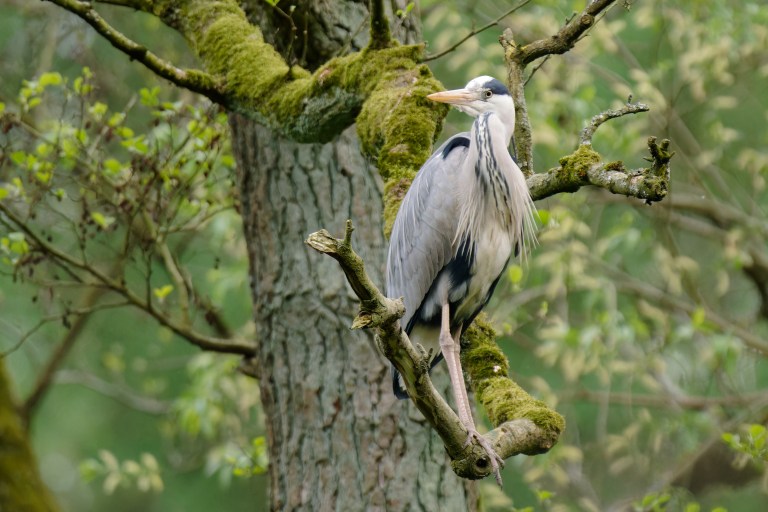I’ll write more about this tomorrow, perhaps, but here’s what I was going to put in tomorrow’s Nooz:
*One day after Columbia University’s President and some of its trustees testified before Congress on endemic antisemitism at the University, and after President Shafik promised to double down on antisemitism, the school has started arresting lots of pro-Palestinian demonstrators engaged in illegal protests. I guess those nasty Republicans put the fear of God (literally) into Shafik, who doesn’t want to go the way of Liz Magill.
The authorities moved Thursday afternoon to quell a protest at Columbia University, arresting dozens of demonstrators who had constructed an encampment of about 50 tents on campus. The arrests, which drew a new crowd of students to support the protesters, came the day after university leaders pledged to Congress that they would crack down on unauthorized student protests tied to the war in Gaza.
Police officers, clad in riot gear and prepared with zip ties, began taking protesters into custody just before 1:30 p.m. as scores of demonstrators gathered in front of Butler Library. “Since you have refused to disperse, you will now be placed under arrest for trespassing,” a man repeatedly called through a loudspeaker. “If you resist arrest, you may face additional charges.”
The scene played out less than 24 hours after Columbia’s president, Nemat Shafik, and other top officials insisted to Congress that they would take a harder line in handling the protests that have embroiled campuses across the country since the Oct. 7 attack on Israel by Hamas. Leaders at two other elite schools, Harvard and the University of Pennsylvania, lost their jobs after similar appearances last year.
Here’s what else to know:
Hundreds of students and others rallied with the protesters inside and outside of the school overnight and through the morning. “They can threaten us all they want with the police, but at the end of the day, it’s only going to lead to more mobilization,” said Maryam Alwan, a senior and pro-Palestinian organizer on campus, speaking from the tent encampment.
Police officers loaded at least three buses with demonstrators, who cooperated as they were taken into custody, though other protesters shouted “Shame! Shame!” Organizers had said they expected to be arrested.
Dr. Shafik angered some students and professors during her appearance before the House Committee on Education and the Workforce on Wednesday, when she largely conceded that she felt some of the common chants at pro-Palestinian protests were antisemitic. In a letter sent on Thursday afternoon as the arrests began, Dr. Shafik said she “took this extraordinary step because these are extraordinary circumstances.”
About time, I’d say. Without punishment there is no deterrent, which is my own University’s problem with protestors like these. And foreign students are especially liable, as they could lose their visas if suspended (that’s why MIT didn’t arrest any of its protestors). Colleges are loath to suspend foreign students, or have them arrested, because foreign students pay pretty much the full fees at colleges, whereas Americans often get big breaks on tuition.
And, mirabile dictu, one of the students who has been both arrested and suspended (from Barnard), is Isra Hirsi, the daughter of none other than Congresswoman and notorious antisemite Ilhan “Follow the Benjamins” Omar. (Omar was in fact on the House committee that grilled the Columbia people.
Isra Hirsi, the daughter of Representative Ilhan Omar of Minnesota, is among several Barnard students who have been suspended for participating in a pro-Palestinian encampment at Columbia University.
The camp, which includes dozens of tents pitched on the campus’s South Lawn in protest against Israeli actions in Gaza, has created a standoff between administrators and students on the Ivy League campus. Dozens of students were arrested on Thursday, after the university notified them that they would be suspended if they refused to move and the students vowed to remain in place.
Ms. Hirsi posted on social media around 11:30 a.m. on Thursday that she was one of three students suspended so far for participating in the protest, which began on Wednesday, the day the university’s president, Nemat Shafik, appeared before Congress to discuss antisemitism on campus.
At the congressional hearing, Dr. Shafik told lawmakers that she would enforce rules about unauthorized protests and antisemitism. Ms. Omar, who is on the committee that held the hearing and who did not mention that her daughter was among the pro-Palestinian protesters, was one of several Democrats who questioned Ms. Shafik about her actions toward Palestinian and Muslim students.
Ms. Hirsi, 21, said on social media that she was an organizer with Columbia University Apartheid Divest, the student coalition that has been pushing the university to cut ties with companies that support Israel. Such divestment is the key demand of protesters in the encampment. She is also involved with the Columbia chapter of Students for Justice in Palestine, one of two student groups that was suspended in November for holding unauthorized protests.
“I have never been reprimanded or received any disciplinary warnings,” she wrote. “I just received notice that I am 1 of 3 students suspended for standing in solidarity with Palestinians facing a genocide.”
Ms. Hirsi is a junior majoring in sociology. Two other Barnard students, Maryam Iqbal, 18, a freshman, and Soph Dinu, 21, a junior majoring in religion, were also suspended, protest organizers said.
Who would have thought that testifying before a hostile group of Republicans in Congress would make college presidents straighten up and fly right? I disagree with the hostile treatment of Presidents, but it’s time to start enforcing the “time, place, and manner” aspects of protests, speech, and demonstrations. It’s also time to enforce behavior codes (and speech codes, if schools have them, which they shouldn’t) uniformly, for it was the lack of uniformity that got Liz Magill fired from Penn and started the process that resulted in Harvard’s Claudine Gay being let go. My preference is the Chicago Free Expression principles, but those don’t allow you to say anything, anywhere, and at any time on campus.
Pro-Palestinian protestors have been coddled too long (even at the University of Chicago), and unless they get serious discipline from their colleges, they’ll just keep disrupting everything. This is a lesson that Daniel Diermeier, Chancellor of Vanderbilt University, learned, perhaps from being Provost here first. What a pity that threats like those of Congress are what make colleges reform and apply their rules uniformly!





















